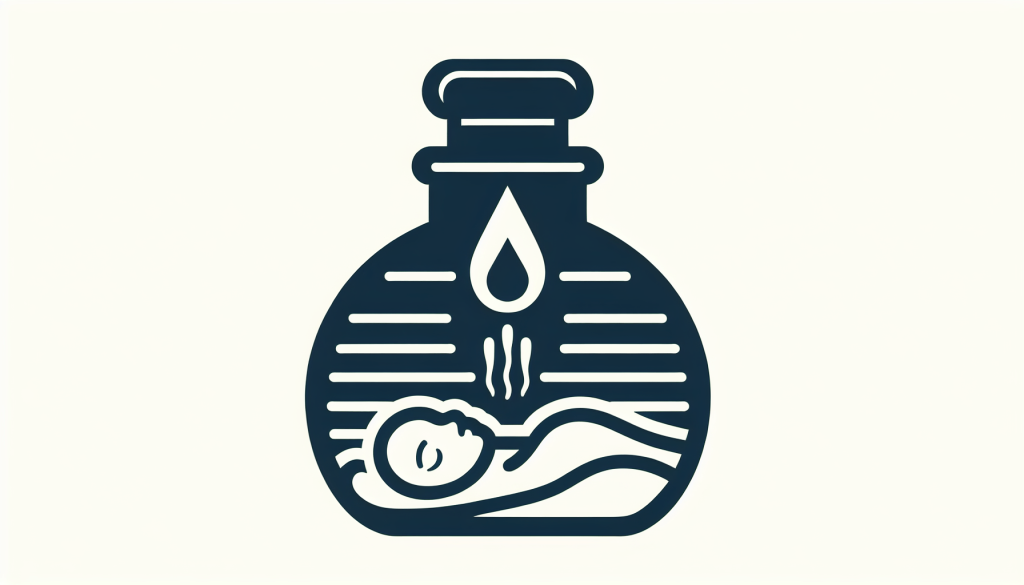So you’ve just completed an intense ab workout and now you’re feeling the burn. It’s no secret that muscle soreness can be a bit of a challenge to deal with, but fear not! In this article, we’ll explore some of the best ways to tackle muscle soreness after an intense ab workout. Whether you’re a fitness enthusiast or a beginner looking to build those six pack abs and strengthen your core muscles, we’ve got you covered. So keep reading to discover some effective strategies to help you soothe those aching muscles and get back to your fitness routine in no time.

Stretching and Warm-up
Stretching plays a crucial role in preventing muscle soreness and injury during and after a workout. Before starting any exercise routine, it is essential to perform dynamic stretches. Dynamic stretches involve active movements that mimic the motions of the workout and help increase blood flow to the muscles. By doing so, you prepare your muscles for the upcoming workout and reduce the risk of strains or pulls.
Once you finish your workout, it’s important to transition into static stretches. Unlike dynamic stretches, static stretches are held for a prolonged period, typically for 15-30 seconds. These stretches help improve flexibility and prevent muscle tightness. By incorporating static stretches into your post-workout routine, you allow your muscles to cool down gradually and reduce the likelihood of post-exercise muscle soreness.
A warm-up routine is equally important to minimize muscle soreness after an intense workout. A warm-up can consist of performing light cardio exercises like jogging or jumping jacks for 5-10 minutes. This increases your heart rate and body temperature, preparing your muscles for the upcoming workout. Additionally, incorporating some mobility exercises, such as neck circles or arm swings, can help loosen up your joints and enhance your overall range of motion. Remember, a proper warm-up primes your body for optimal performance and reduces the risk of muscle soreness.
Proper Nutrition
Proper nutrition plays a vital role in supporting muscle recovery and reducing muscle soreness. One key aspect is consuming protein-rich foods. Proteins are the building blocks of muscles and aid in their repair and growth. Include lean sources of protein such as chicken, fish, tofu, or legumes in your meals to provide your body with the necessary nutrients to recover and rebuild muscle fibers.
Another crucial element in reducing inflammation and muscle soreness is including anti-inflammatory foods in your diet. Foods rich in omega-3 fatty acids, such as fatty fish, walnuts, and chia seeds, have anti-inflammatory properties. Additionally, incorporating fruits and vegetables that are high in antioxidants, such as berries, spinach, and kale, can help reduce exercise-induced inflammation and support the recovery process.
Staying hydrated is equally important for muscle recovery and preventing muscle soreness. During exercise, your body loses water through sweat, and dehydration can worsen muscle soreness. Make sure to drink plenty of water throughout the day, especially before, during, and after your workouts. Hydration optimizes muscle function, lubricates the joints, and helps flush out metabolic waste from the muscles.
Rest and Recovery
Rest and recovery are often underrated but crucial factors in managing muscle soreness after an intense workout. Giving your body adequate rest between workouts allows time for your muscles to repair and rebuild. Overtraining or not allowing enough recovery time can lead to increased muscle soreness and potential injuries. Aim for at least 48 hours of recovery time between intense ab workouts.
In addition to rest between workouts, getting enough sleep is essential for muscle recovery. During sleep, your body releases growth hormones that promote muscle repair and regeneration. Aim for 7-9 hours of quality sleep each night to optimize the recovery process. Consider establishing a consistent sleep schedule and creating a sleep-friendly environment to enhance the quality and duration of your rest.
Listening to your body’s signals is crucial for managing muscle soreness. If you experience excessive soreness or pain that persists for an extended period, it may be an indication that you need additional rest or modifications to your workout routine. Be mindful of any signs of overtraining, such as chronic fatigue, decreased performance, or mood changes. Adjusting your training intensity or seeking professional guidance can help prevent further muscle soreness and potential injuries.
Foam Rolling
Foam rolling is a self-myofascial release technique that can help alleviate muscle soreness and promote faster recovery. By using a foam roller, you can apply pressure to specific muscle groups, targeting areas of tension and tightness. This technique helps break up adhesions or knots in the muscles, loosening them up and improving blood circulation.
When using a foam roller on sore muscles, it’s essential to roll slowly and apply controlled pressure. Start rolling from the origin of the muscle and gradually move towards the insertion point. Focus on any tender or tight areas, spending extra time on those spots. It’s normal to experience some discomfort during foam rolling, but avoid excessive pain. Foam rolling should feel like a deep tissue massage, not a painful experience.
Exploring different foam rolling techniques can provide additional relief for muscle soreness. For example, you can try using a foam roller on your quadriceps, hamstrings, calves, or glutes. Additionally, using a foam roller on your upper back and shoulders can help release tension caused by prolonged sitting or computer work. Remember to breathe deeply and relax your muscles while foam rolling, allowing the pressure to work its magic in relieving muscle soreness.

Ice and Heat Therapy
Applying ice packs to sore muscles can help reduce inflammation and alleviate muscle soreness. Ice therapy, also known as cryotherapy, is commonly used by athletes to assist in recovery. The cold temperature of ice constricts blood vessels, reducing blood flow to the affected area and reducing inflammation. Applying ice packs for 15-20 minutes at a time, with a cloth or towel as a barrier, can provide relief for muscle soreness.
On the other hand, heat therapy can help relax muscles and promote blood flow to the affected area. Applying a heating pad, warm towel, or taking a warm bath can help soothe muscle soreness. The heat increases blood circulation, delivering essential nutrients and oxygen to the muscles, which aids in the recovery process. Heat therapy is particularly effective for relieving muscle tension or stiffness.
When using ice or heat therapy, it’s essential to listen to your body and pay attention to any adverse reactions. If the application worsens your muscle soreness or causes additional discomfort, discontinue use. Additionally, never apply heat or ice directly to the skin, always use a barrier such as a cloth or towel to protect your skin.
Massage and Physical Therapy
Getting a sports massage can be an excellent method for relieving muscle soreness after an intense ab workout. Sports massages focus on specific muscle groups, targeting areas of tension and soreness. The massage therapist applies various techniques, such as deep tissue or Swedish massage, to promote relaxation, improve blood flow, and stimulate the recovery process. Sports massages can also help prevent muscle imbalances and decrease the risk of injuries.
If muscle soreness persists or becomes chronic, seeking professional help from a physical therapist is highly recommended. Physical therapists are trained professionals who can assess and treat muscle imbalances or injuries. They can provide individualized treatment plans, including exercises, stretches, and modalities to help manage muscle soreness, improve strength, and promote overall recovery. Physical therapy can be particularly beneficial if you experience recurring or severe muscle soreness after your ab workouts.

Over-the-Counter Pain Relievers
In some cases, over-the-counter pain relievers can provide temporary relief for muscle soreness. Non-steroidal anti-inflammatory drugs (NSAIDs) such as ibuprofen or naproxen sodium can help alleviate pain and reduce inflammation. However, it’s important to use these medications responsibly and as directed by a healthcare professional. NSAIDs should not be relied upon as a long-term solution for managing muscle soreness, and it’s always best to seek professional advice for persistent or severe discomfort.
Pain relieving creams and gels can also provide localized relief for muscle soreness. These topical products usually contain ingredients like menthol, camphor, or capsaicin, which create a cooling or warming sensation on the skin. By applying these creams or gels directly to the sore muscles, you can temporarily numb the area and alleviate discomfort. However, it’s important to follow the instructions provided and avoid applying these products to broken or irritated skin.
Active Recovery
Engaging in low-intensity exercises on your rest days can aid in muscle recovery and reduce muscle soreness. Active recovery involves performing light activities that promote blood flow to the muscles without causing excessive stress. Walking, swimming, or cycling at a leisurely pace can help flush out metabolic waste from the muscles and promote quicker recovery.
Another option for active recovery is doing specific workouts that target different muscle groups. For example, if your ab workout left you particularly sore, you can focus on upper body exercises or incorporate a stretching or yoga routine to improve flexibility. By engaging in these low-intensity activities, you allow your muscles to recover while still staying active and maintaining your fitness routine.

Gradual Increase in Intensity
To avoid excessive muscle soreness, it’s important to gradually increase workout intensity over time. Sudden or drastic increases in intensity can put excessive strain on your muscles, leading to more significant soreness or even injury. Instead, start with a comfortable level of intensity and gradually progress as your strength, endurance, and fitness improve.
By gradually increasing the intensity, you allow your muscles to adapt and become stronger over time. This progressive approach reduces the likelihood of severe muscle soreness and helps prevent overtraining. Remember, consistency and progressive overload are the keys to long-term improvements in muscle strength and endurance.
Correct Form and Technique
Using proper form and technique during exercises is crucial to prevent muscle soreness and avoid injuries. Poor form can put unnecessary stress on your muscles, joints, and connective tissues, leading to muscle imbalances or strains. Before starting any exercise routine, take the time to learn and practice proper form.
Seeking guidance from a professional trainer or coach can be extremely beneficial, especially if you’re new to exercise or performing complex movements like ab exercises. A qualified professional can assess your form, provide feedback, and suggest corrections to ensure you’re performing exercises safely and effectively. By using correct form and technique, you can minimize muscle soreness and optimize the benefits of your workout.
In conclusion, dealing with muscle soreness after an intense ab workout requires a multi-faceted approach. Incorporating stretching and warm-up routines, practicing proper nutrition, allowing for adequate rest and recovery, and utilizing techniques such as foam rolling, ice and heat therapy, massage, and physical therapy can all contribute to alleviating muscle soreness. Additionally, practicing active recovery, gradually increasing workout intensity, and using correct form and technique can help prevent excessive muscle soreness and promote long-term muscle health. By implementing these strategies, you can enjoy the benefits of a challenging ab workout while minimizing the discomfort of muscle soreness. Remember to listen to your body, be patient, and make adjustments as needed for optimal results.





